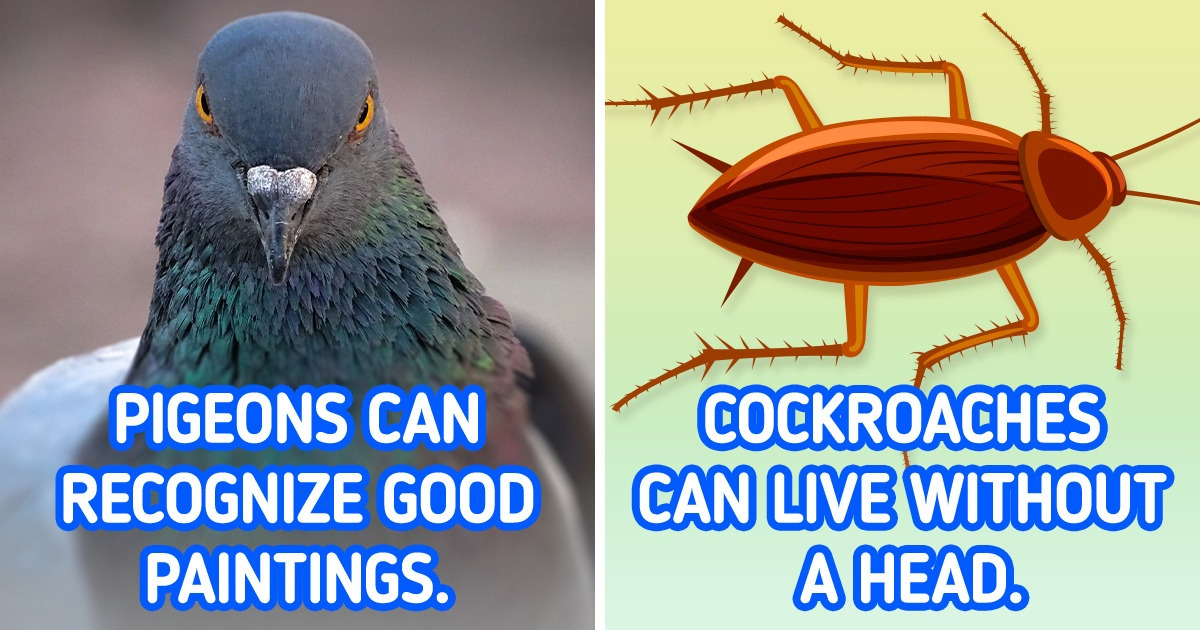I Refused to Share My $400K Lottery Winnings With My Family


To this day, 65% of our Earth — excluding dry land — is still shrouded in mystery, and 86% of the world’s species are unknown. But science is constantly making progress, and it seems that researchers always have something to surprise us with. For example, we recently discovered that pigeons can learn art and sheep can recognize your face.
We at Bright Side want to share some of today’s most recent scientific research and amaze you with facts you probably haven’t heard before.
Can you identify good paintings? Well, pigeons can! One Japanese study has shown that trained pigeons can differentiate “good” and “bad” paintings. Scientists have discovered that the birds use color, texture, and pattern cues to decide whether the painting is beautiful (in people’s opinion). Of course, we are not talking about advanced skills, but pigeons, if trained, can acquire the ability to judge beauty similar to that of humans.
Yes, you read it right: cockroaches can live without a head for a very long time because they don’t have an extensive network of blood vessels. If the cockroach is decapitated, the blood clots will close the wound. These insects breathe through spiracles, which are tube-shaped holes located on the side and abdomen. However, the cockroach will not be able to eat without a head, so in a few weeks, it will still die from hunger.
Recent research has shown that sheep are much smarter than we think. They have advanced face-recognition abilities that are similar to primates. So sheep are able to recognize familiar and unfamiliar human faces and, in the future, it may be interesting to know whether they can identify different human expressions.
If you ask yourself where our teeth started to evolve, you wouldn’t assume that it happened under the sea. However, scientists think that this is likely the case. They have discovered the teeth of one of the most ancient fish that, before, were set in the bones of the jaw. And apparently, their jawbones have enough similarities to modern human jaws that they are believed to be directly ancestral to ours.
One of the most incredible animals living underwater is the octopus. They have 3 hearts, 9 brains, and blue blood. Why that much stuff, you ask? In fact, each of the 8 tentacles has its own small brain connected to the central one, the ninth. Due to this, all tentacles can work independently of each other but in harmony.
Octopuses also have 3 hearts because of their structure: 2 hearts pump blood to the gills and the third one, the largest, is responsible for the circulation of blood in the rest of the body.
The blood of an octopus contains a copper-rich protein called hemocyanin. It improves the ability to transport oxygen in cold ocean conditions and is responsible for the color of the blood.
The fairly new research has brought incredible knowledge: our tongues can not only taste food, but they can also smell! Scientists found that tongue taste cells contain some of the same molecules that have smell receptors in our noses. Such research was inspired by snakes whose tongues can sniff the air.
In the underwater kingdom, some males, not just females, can give birth. This “humble” list includes only 3 species: seahorses, pipefish, and sea dragons. Male seahorses, for example, during the mating season, swim up to the female and stick to them, and at this moment, the male opens his pocket wide, and the female throws several eggs into it. In the future, the offspring of seahorses is carried by the male.
Since we all know that water freezes at 0 degrees Celsius, it may be strange to hear that hot water freezes faster than cold. But it really does, and this phenomenon is called the “Mpemba effect.”
Why is it so? Actually, there are more than 10 possible explanations for the effect, and scientists still have to come to a common ground on certain reasons for it.
Grasshoppers are unique insects that, among other unusual features, have ears located on their abdomen tucked under the wings. The ear organ allows grasshoppers to hear the songs of their fellow friends.
Although people assumed this boiling river was a myth, such a river exists deep in the Peruvian Amazon. In fact, the river is not actually boiling, but the temperature of it is very close to that mark, and it’s still very hot.
Can you share other unusual scientific facts?











